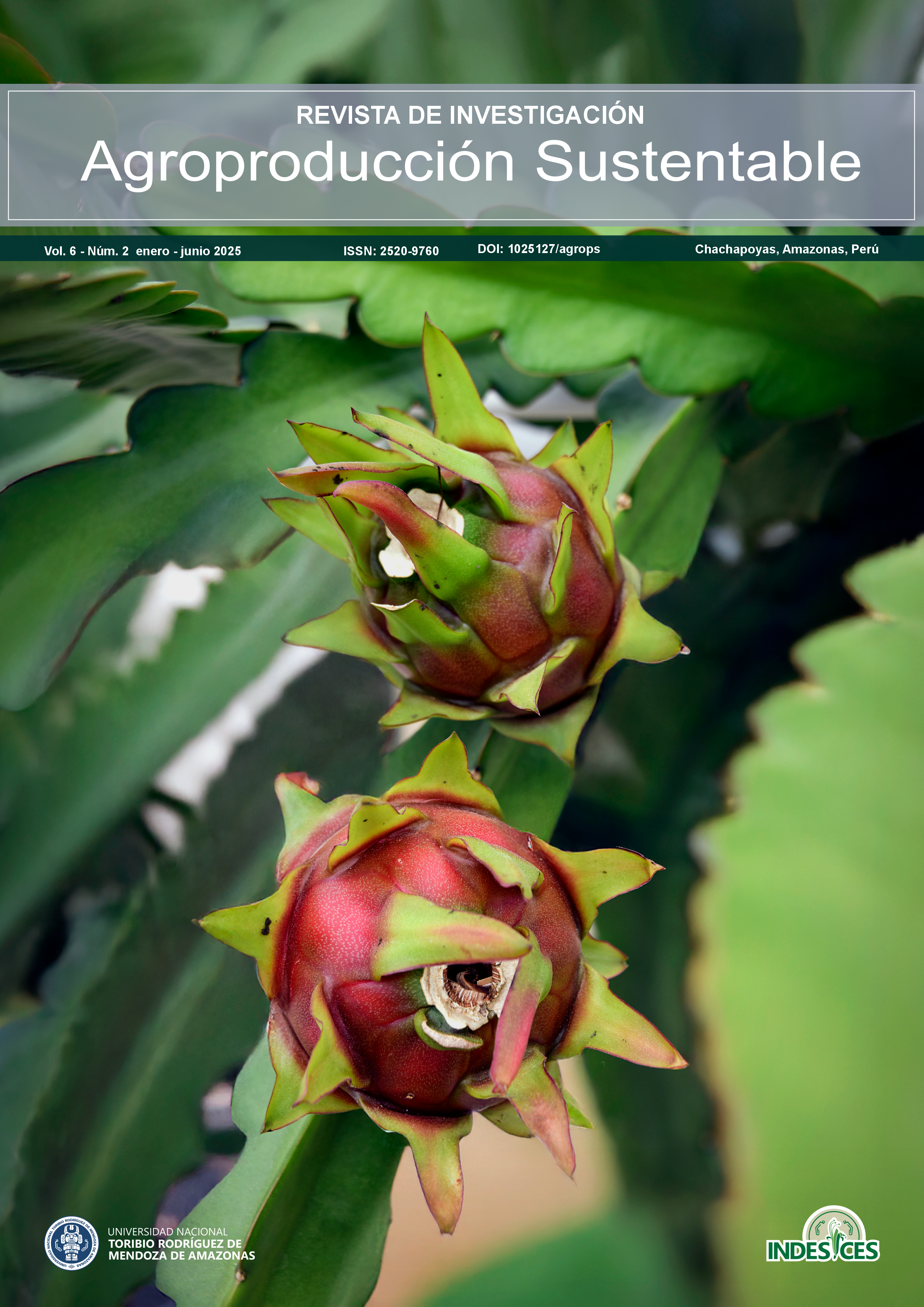Comparative analysis of soils from five districts of the Cañete Valley basin and their influence on the fertility of corn (Zea mays L.) crops
DOI:
https://doi.org/10.25127/agrops.20252.1084Keywords:
Propiedades fisicoquímicas, edafotipos agrícolas, indicador agronómico, productividad edáfica, textura granulométricaAbstract
A comparative analysis of agricultural soils was carried out in five districts of the Cañete valley basin (Peru), with the objective of evaluating their influence on the fertility of specialty corn (Zea mays L.) crops. Seven composite samples were collected, composed of 20 subsamples at 30 cm depth, considering texture, color and topography. The results showed that, on average, the soils had a loamy texture, neutral to slightly alkaline pH (7.74), average organic matter content (4.40 %), exchangeable sodium percentage of 11.49 % and effective cation exchange capacity (E.C.E.C.) of 16.66 mEq/100 g. At the district level, edaphic variations were identified: Nuevo Imperial showed clay loam texture and higher organic matter content (5.31 %), while Quilmaná and Imperial had silt loam texture and low levels of exchangeable sodium (<0.3 %). San Vicente stood out for its higher organic matter (6.13 %) and San Luis for its high P.S.I. (73.26 %). Overall, the edaphic properties reflect favorable conditions for the development of specialty corn, with potential to achieve high yields and organoleptic quality. These results provide useful evidence for agricultural planning, sustainable soil management and the improvement of regional productivity.
Published
Issue
Section
License
Copyright (c) 2025 Juan Saldivar Villarroel, Héctor Aguirre-Espinoza, Raymunda Veronica Cruz Martínez

This work is licensed under a Creative Commons Attribution-NonCommercial-ShareAlike 4.0 International License.
Aquellos autores/as que tengan publicaciones con esta revista, aceptan los términos siguientes:
- Los autores/as conservarán sus derechos de autor y garantizarán a la revista el derecho de primera publicación de su obra, el cuál estará simultáneamente sujeto a la Licencia de reconocimiento de Creative Commons. Por tanto:
Usted es libre de:
- Compartir — copiar y redistribuir el material en cualquier medio o formato
- Adaptar — remezclar, transformar y construir a partir del material
- La licenciante no puede revocar estas libertades en tanto usted siga los términos de la licencia
Bajo los siguientes términos:
Atribución — Usted debe dar crédito de manera adecuada, brindar un enlace a la licencia, e indicar si se han realizado cambios. Puede hacerlo en cualquier forma razonable, pero no de forma tal que sugiera que usted o su uso tienen el apoyo de la licenciante.
NoComercial — Usted no puede hacer uso del material con propósitos comerciales.
CompartirIgual — Si remezcla, transforma o crea a partir del material, debe distribuir su contribución bajo la lamisma licencia del original.
- No hay restricciones adicionales — No puede aplicar términos legales ni medidas tecnológicas que restrinjan legalmente a otras a hacer cualquier uso permitido por la licencia.
- Los autores/as podrán adoptar otros acuerdos de licencia no exclusiva de distribución de la versión de la obra publicada (p. ej.: depositarla en un archivo telemático institucional o publicarla en un volumen monográfico) siempre que se indique la publicación inicial en esta revista.
- Se permite y recomienda a los autores/as difundir su obra a través de Internet (p. ej.: en archivos telemáticos institucionales o en su página web) antes y durante el proceso de envío, lo cual puede producir intercambios interesantes y aumentar las citas de la obra publicada. (Véase El efecto del acceso abierto).

Esta obra está bajo una Licencia Creative Commons Atribución-NoComercial-CompartirIgual 4.0 Internacional


